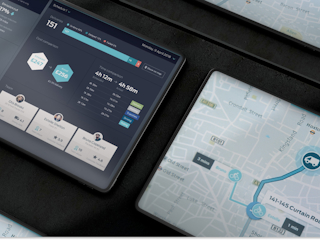Connected mobility: the rise of digital technology in everything on the road
01 diciembre, 2016
When people talk about the Internet of Things, they often give Google’s autonomous car as an example. The expectation is that we will see self-driving cars on the road within five years. But the world of mobility is bigger than the autonomous vehicle. At Valtech, we work for various car, bicycle, energy and lease companies. And at all these companies, people have questions about digital transformation and mobility. It’s time for an update on connected mobility.
Changing user desires
Car ownership is a cornerstone of modern society. But slowly, this is changing. Young adults are increasingly less likely to own a car, while travelling by Uber, public transport or bicycle is an increasingly attractive alternative. Thanks in part to real-time information about traffic and the availability of transport, users can make better decisions about when to use which travel option.
The connected car
Every self-respecting car brand is investing heavily in the “connected car”. What functions can we expect in the near future? Everis, a consultancy firm, conducted extensive research into the connected car and divided its findings into five categories: safety, infotainment, traffic efficiency, cost efficiency and overall user experience.
Currently, many car companies are working on their own systems, and, as in every developing market, this will lead to the creation of new standards. Both Apple, with Carplay, and Google, with Android Auto, are fighting over the future of the in-car operating system. But they are not only ones. Others are beavering away in attics and garages. Hacker George Hotz successfully knocked together a self-driving car using relatively cheap components. And Mojio enables you to turn any car made after 1996 into a connected vehicle.
A key concern with connected cars is safety. On the one hand, there’s the threat posed by hacking (as when hackers took control of this this Jeep and disengaged its brakes); on the other, concerns about the reliability of, and legal issues surrounding, the use of sensors that react automatically in dangerous situations.
Fintech and the connected car
Just as interesting from a technology standpoint are the developments around fintech and the connected car. In the On-Demand Economy, we expect instant access to any mode of transport. Whatever it is, we want to be able to book a car, bike, bus or train any time of day at the tap of a screen. This in turn raises opportunities around payment, insurance and subscriptions. Especially in a country like the Netherlands, with a well-developed financial sector and an under-pressure road and rail network, we can expect to see fintech innovation. Think of insurance that reflects how you actually drive, or “instant insurance” whenever you let someone else use your car.
The connected bicycle
The “e” in e-bike stands for electrically assisted, but with the advent of mobile, wearables and the inclusion of sensors on bicycles, the bike is becoming electronically connected as well. An interesting development in the world of wearables: whereas Google Glass failed, Garmin has launched a smart heads-up display, the Varia Vision. We’re big fans of cycling here at Valtech, as well as of Strava, the social network for athletes. Within Valtech Labs, we’re looking to see if we can connect Strava to an automatic, kilometre-based travel allowance and team leader boards. Why? So that cycling to work is not only healthier, but also financially attractive and with a competitive element as well.
In the near future we foresee that bikes connect to cars, traffic lights, street lights, and so on. These connections make it possible to create new services by means of artificial intelligence and big data. In this way cyclists can receive predictive information such as accident warnings or be notified about the possibility to cross a green light with the current cycling speed.
Service commerce: the customer journey from analogue to digital
Across the mobility industry, we’re seeing increasing integration between e-commerce, traditional commerce, service and brand. More and more, the configuration of complex service processes involves pulling together multiple channels under one consistent and brand-reinforcing user experience. In the case of connected mobility, doing this well involves getting the three A’s right: the APIs, the App and Artificial Intelligence. We expect to see a number of big leaps forward in connected mobility over the next five years. Here are some predictions:
• The car will join the couch/TV combo as one of the key places for “infotainment”. What else are we going to do with the 50 minutes a day we spend being driven around on autopilot?
• Car ownership, insurance, roadside services, tax, maintenance … soon they will all be bundled in one easy car subscription service.
• Smart navigation systems and autonomous vehicles won’t halt the rise of e-bikes/pedelecs. Over both mid-range distances and certainly in towns and cities, e-bikes will continue to grow in popularity.
• And traffic jams? Will they still exist? We think so, though we call it “dynamic traffic speed”.
Freek Bijl, with input from Floris Ketel, Stijn van Aert, Rens Meyer and Bart Bouwmeester.








